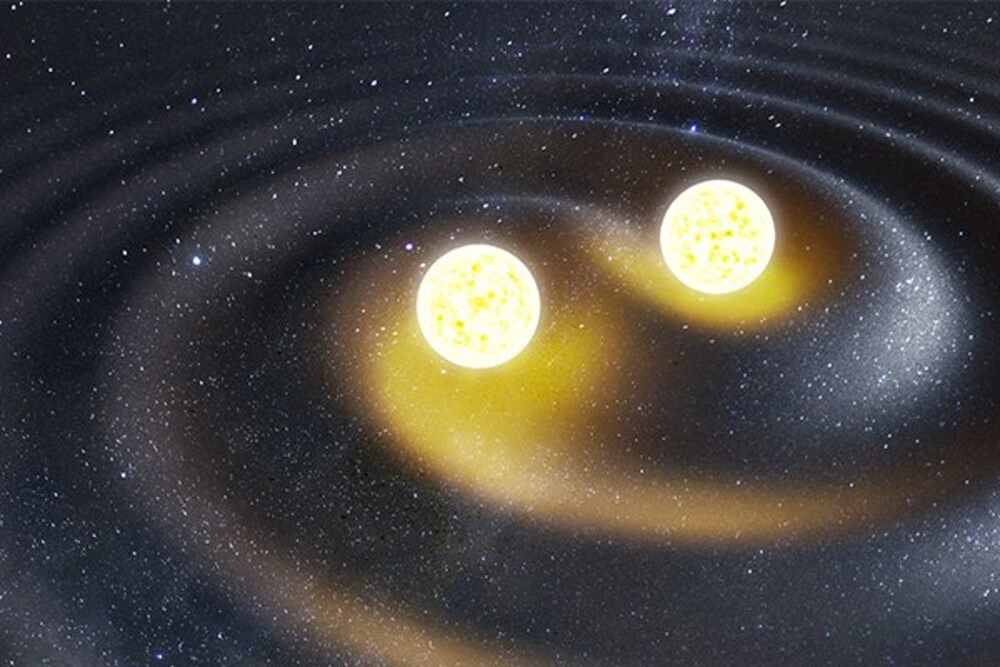Researchers make progress in advancing gravitational wave detection by using supercomputer simulations

Researchers at the University of Minnesota Twin Cities College of Science and Engineering have made significant strides in detecting gravitational waves, bringing us closer to understanding the mysteries of the universe. This groundbreaking research aims to provide faster alerts, within 30 seconds, to astronomers and astrophysicists after the detection of these cosmic ripples by using an unprecedented supercomputer simulation campaign. This development holds the potential to enhance our understanding of neutron stars, black holes, and the production of heavy elements such as gold and uranium.
Gravitational waves are elusive ripples in space-time predicted by Einstein's theory of general relativity. They compress space-time in one direction while stretching it perpendicular to that compression. Detecting these waves requires precise measurements of laser length, equivalent to measuring the distance to the nearest star with the accuracy of a human hair's width, and utilizing state-of-the-art gravitational wave detectors that examine the interference patterns produced by combining two light sources through interferometry.
The University of Minnesota team's groundbreaking research is part of the LIGO-Virgo-KAGRA (LVK) Collaboration, a global network of gravitational wave interferometers. Leveraging data from previous observation periods, the team developed comprehensive simulation software and equipment upgrades to detect the shape of gravitational wave signals, monitor the signals' behavior, and estimate the masses involved, whether they are neutron stars or black holes.
By using this new software, researchers can precisely locate the collisions of neutron stars, which are formed when massive stars explode in supernovas, even when the gravitational wave signals are too faint to observe directly. The invaluable information gathered allows experts to gain insights into the behavior of neutron stars, study the nuclear reactions during collisions between neutron stars and black holes, and unravel the mysteries behind the production of heavy elements like gold and uranium.
After the fourth observing run utilizing the Laser Interferometer Gravitational-Wave Observatory (LIGO), which isoperated by Caltech and MIT and funded by the National Science Foundation, observations are scheduleduntil February 2025. Continuous improvements have been made to enhance signal detection between observing periods. After this run concludes, researchers will closely analyze the gathered data and make further enhancements to expedite the alert system, ensuring that alerts are sent out even faster in future observations.
This amazing breakthrough achieved through the University of Minnesota Twin Cities College of Science and Engineering's innovative supercomputer simulation campaign heralds a new era in the detection of gravitational waves. As astronomers and astrophysicists eagerly embrace faster alert systems, we move closer to unlocking the profound mysteries of the universe, one gravitational wave at a time.

 How to resolve AdBlock issue?
How to resolve AdBlock issue?